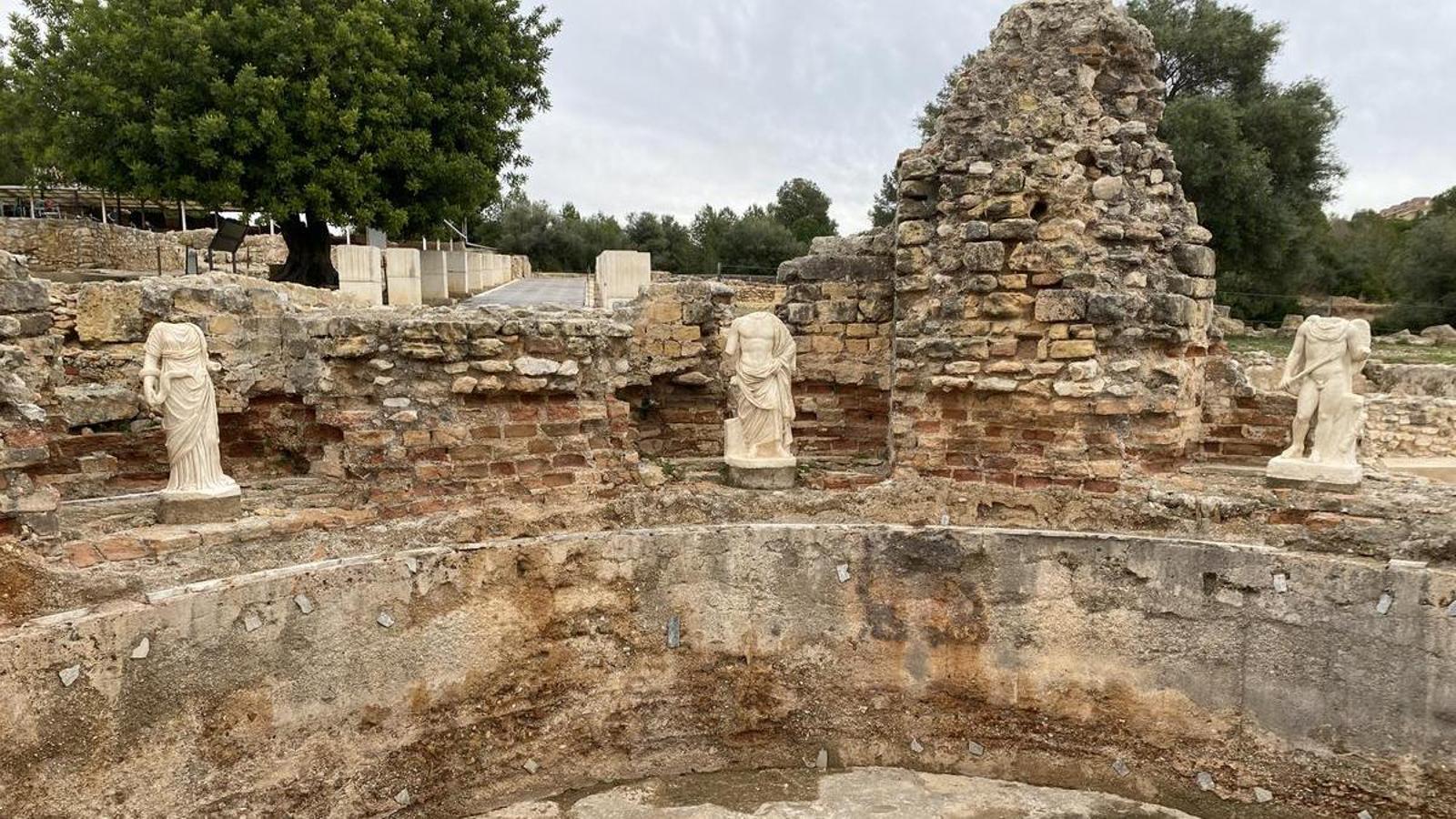"In Els Munts, early in the day, you see foxes with very long tails... trying to eat the rabbits running around. In addition to being an archaeological park, Els Munts is a natural park," says Josep Anton Remolà, who excavated at the Mitreu. There are also large, silent eagle owls. Many residents—and vacationers—in the area may be unaware of all this fauna. "The monumental archaeological remains of Els Munts have made it possible to preserve a natural environment where these animals coexist," Remolà remarks.
An earthly paradise with water everywhere
The Munts


"Water was a fundamental element in the Munts, for irrigating the gardens, for the animals, for bathing, for washing, and for living, of course," says Josep Anton Remolà, curator of the MNAT (National Archaeological Museum of Tarragona), who knows Els Munts (Altafulla) like the back of his hand. This Roman villa is located by the sea, but what it needed to "function" wasn't seawater, but freshwater. And lots of it!
"The Roman villa of Els Munts is a product of Tarraco's period of greatest splendor: the beginning of the 2nd century AD," Josep Anton explains. "El Munts was built on the remains of an earlier, simpler Roman villa from the 1st century AD, of which few elements have survived. It seems to have been used primarily for farming."
We began our visit at the top of the hill where Els Munts is located—a World Heritage Site, as it is part of the archaeological sites of Tarraco, which are also World Heritage Sites. Up here are several empty water tanks. "The water must have arrived through an aqueduct, because a lot of it was needed; they didn't even have enough with the rainwater to begin with," Josep Anton tells me. Near these tanks is a kind of stone arch—popularly known as "la tartana"—which is what remains of the barrel-vaulted roof of a monumental fountain.
Walking through the grounds, I try to imagine the privileged view—without a single building—enjoyed by Caius Valerius Avitus, commissioner of the Emperor Antoní Pius and duumvir of Tarraco (one of the two local magistrates), and his wife Faustina, who were its tenants. They often entertained the elite of Tarraco, who enjoyed the tranquility of the place, located 12 kilometers from the bustling capital of Hispania Citerior.
I imagine well-ordered terraced gardens that reached almost to the sea, colorful—with flowers and plants—with pergolas, trellises, statues, and the soundtrack of springs, the tweeting of exotic birds (pheasants, peacocks, parrots...) captive in cages or on semi-beach.
A multitude of slaves were needed to perform all the services, especially when people came from outside. "The enjoyment of a few required the forced effort of many enslaved people," says Remolà. Since energy was only animal and human, the slaves had a multitude of tasks to perform: meals, washing towels, entertaining people, taking care of the gardens, the animals, repairing the water pipes... "Were the slaves only men?" I ask her. "Both men and women; they made no distinction," she answers when we are in front of the dining room (triclinium) of the domus, which contained no fewer than seven springs and a Mithraeum (a space dedicated to the worship of Mithras, comparable in size to the Baths of Caracalla in Rome). The main house and the baths are connected by a passageway—partly covered and partly porticoed—decorated with a splendid mosaic.
Both the fact that there is a mithraeum (the largest known) and the discovery (in the domus!) of a statue of Antinous, the slave and lover of the Emperor Hadrian deified after his tragic and confusing death in the River Nile, would support the hypothesis that the Roman villa of Montes in the 2nd century would have been erected to accommodate the emperor and part of the emperor and part of an assembly of the notables of all Hispania, in a winter in which Tarraco was de facto the seat of the Roman Empire.
The main objective of my visit today is the Els Munts baths, which have been preservedn partMany people mistakenly call them terms, but hot springs are public baths, and baths are private.
The baths consisted of several chambers, some with cold water, others with lukewarm water, and others with hot water. For heating, in addition to the sun, they had a hypocaust under the pavement, through which circulated hot air produced in ovens (which the slaves they fed with firewood). The furnaces also heated the water in the baths and pools. The largest, cold-water, outdoor pool, called natatio, even allowed swimming.
The bare stone and mortar of the ruins make it difficult to get a sense of the luxury and refinement of these great baths. "There were mosaics on the floors, wall coverings with marble slabs from all over the Mediterranean, mural paintings on the domes and vaults, and a large number of decorative statues; the MNAT preserves a small portion of these statues," explains Remolà. "In these baths, you could tell what type of room you were in just by looking at the color of the marble on the walls: yellowish in the warm ones and greenish in the cold ones," adds Josep Anton.
Excavation and research continue at Els Munts—now with more vigor, now with less, depending on budgets. Many of the artifacts, mosaics, sculptures, and paintings found at the site are currently housed in the National Archaeological Museum of Tarragona, which manages this magnificent facility.
